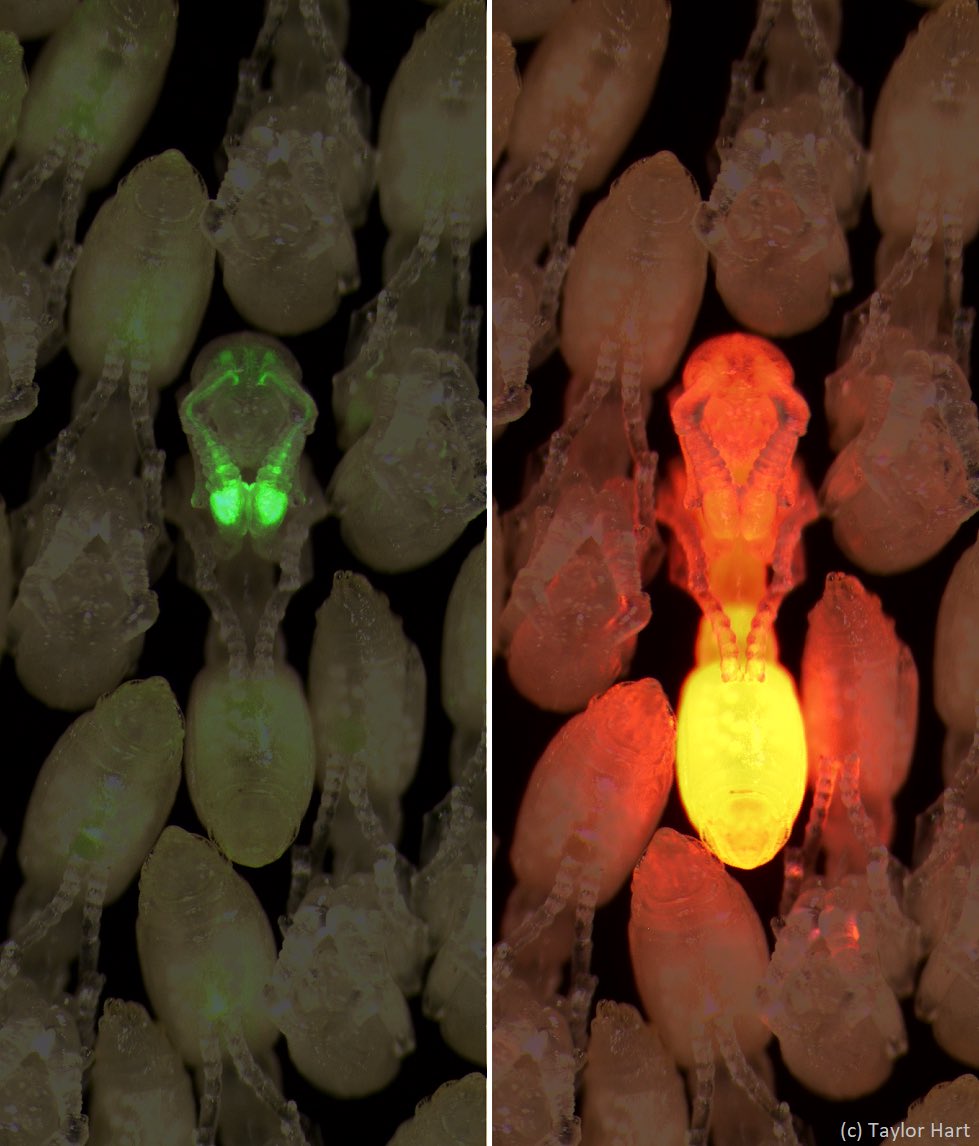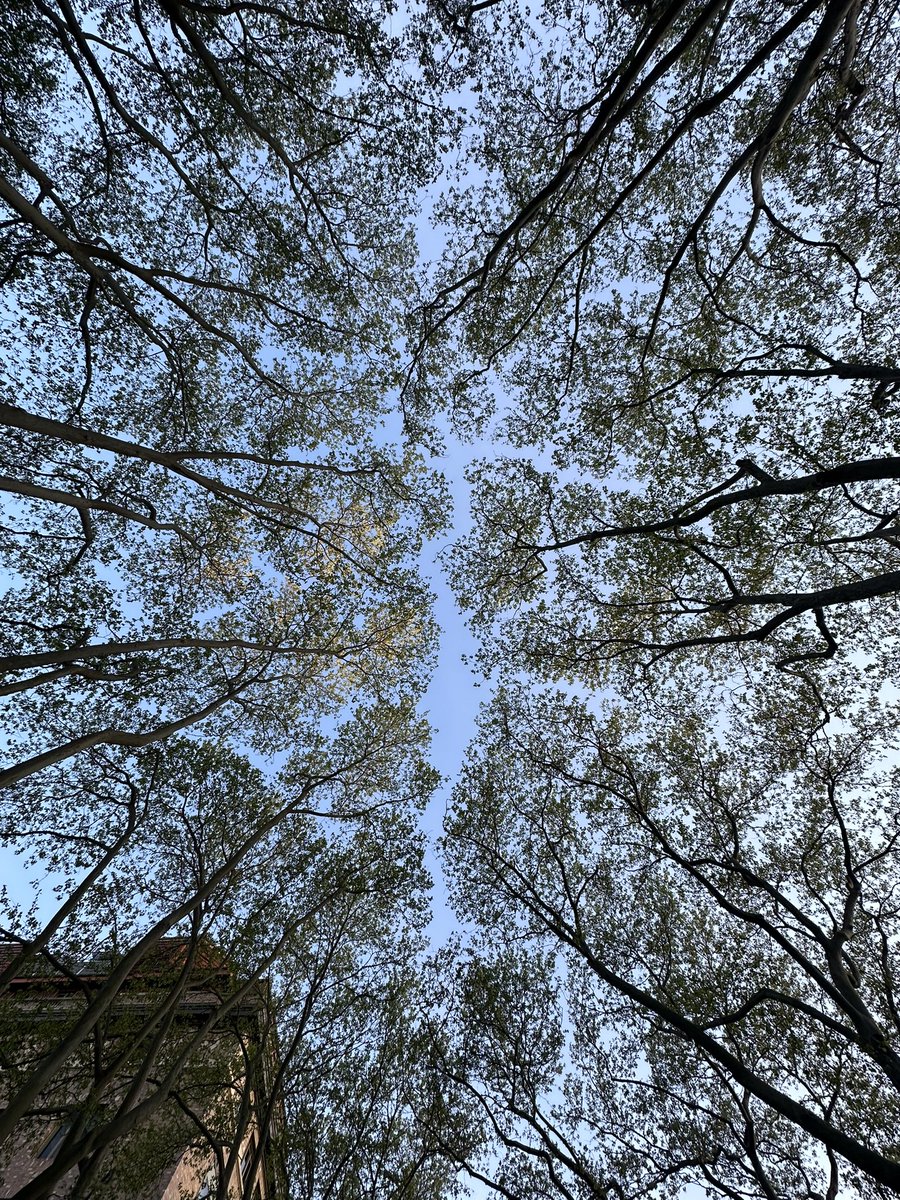
Daniel Kronauer
@DanielKronauer
Myrmecophile for life. 🐜 🤓 🐜 Follow me on 🦋 if you want to stay in touch.
Our first neurogenetic study of ants survived peer review and just appeared OA in its final form @CellCellPress @CellPressNews: cell.com/cell/fulltext/…. @teraxurato & team @RockefellerUniv created the first transgenic ants and identified a sensory hub for alarm behavior. 1/8

I’ll stop posting and interacting here. Follow me on 🦋 if you want to stay in touch.
Vulcanidris cratensis reconstruction. Founder queen with her first worker, second pupa on the way and two generations of larva feeding on prey item.
While “Berührungsangst” (the fear of contact) is generally the exception at @RockefellerUniv, here is an example of crown shyness on our beautiful spring campus.

A nest of the northern paper wasp, Polistes fuscatus. The wasps like to build their nests under overhangs, especially of wooden houses. They masticate the wood they collect from the environment into a pulp, which they then use to construct their paper combs. Woodstock, NY.

Not that the internet needs more photos of monarch butterflies, but they’re just so pretty. Here’s my favorite stage, the chrysalis, with its golden ornamentations. The other image shows the fully grown caterpillar as it enters pupation. Woodstock, NY.


I usually associate phasmids with the tropics, but there are also two species native to New York. Here is the common walkingstick, Diapheromera femorata, which enjoys the oak trees in my garden. Small nymphs appear in May, and adults, like this one, in late summer. Woodstock, NY.




A bald-faced hornet fly (Spilomyia fusca; a syrphid, or hoverfly) and an actual bald-faced hornet (Dolichovespula maculata). The former is supposed to be a mimic of the latter, and I can believe that one might be fooled upon a cursory look. Woodstock, NY.



Happy Easter everyone! 🥚 🐣 🥚 This Aphaenogaster (rudis?) ant has had a very successful egg hunt, and I hope so will you. 🥚 🥚 🥚

A young queen of the American carpenter ant (Camponotus americanus) with a mite attached to its thorax. The mites associated with ants are highly diverse and vastly understudied. Woodstock, NY.

Today I found Haeterius clown beetles under a rock with a Formica ant colony. These beetles are “ant guests”, and the ants often feed them. The beetles are tiny though, even compared to the ants. Also check out the springtails. Thanks to Joe Parker for the 🪲 ID. Woodstock, NY.
Army ant males disperse on the wing to find a colony with a receptive young queen. When they encounter and enter such a colony, the resident workers immediately remove their wings. Here’s an Eciton burchellii male that I found inside a colony after its successful journey.

Science and art offer complementary approaches to achieving a deeper understanding of life, and the exchange between the two can be very fruitful. Check out the fantastic work of Maximilian Prüfer, who lets insects express themselves in his art: maximilian-pruefer.com
Artist-in-residence Max Pruefer collaborates with scientists in @DanielKronauer's lab to explore how chemical communication drives social behavior between ants. Learn more: bit.ly/4hU0nY1